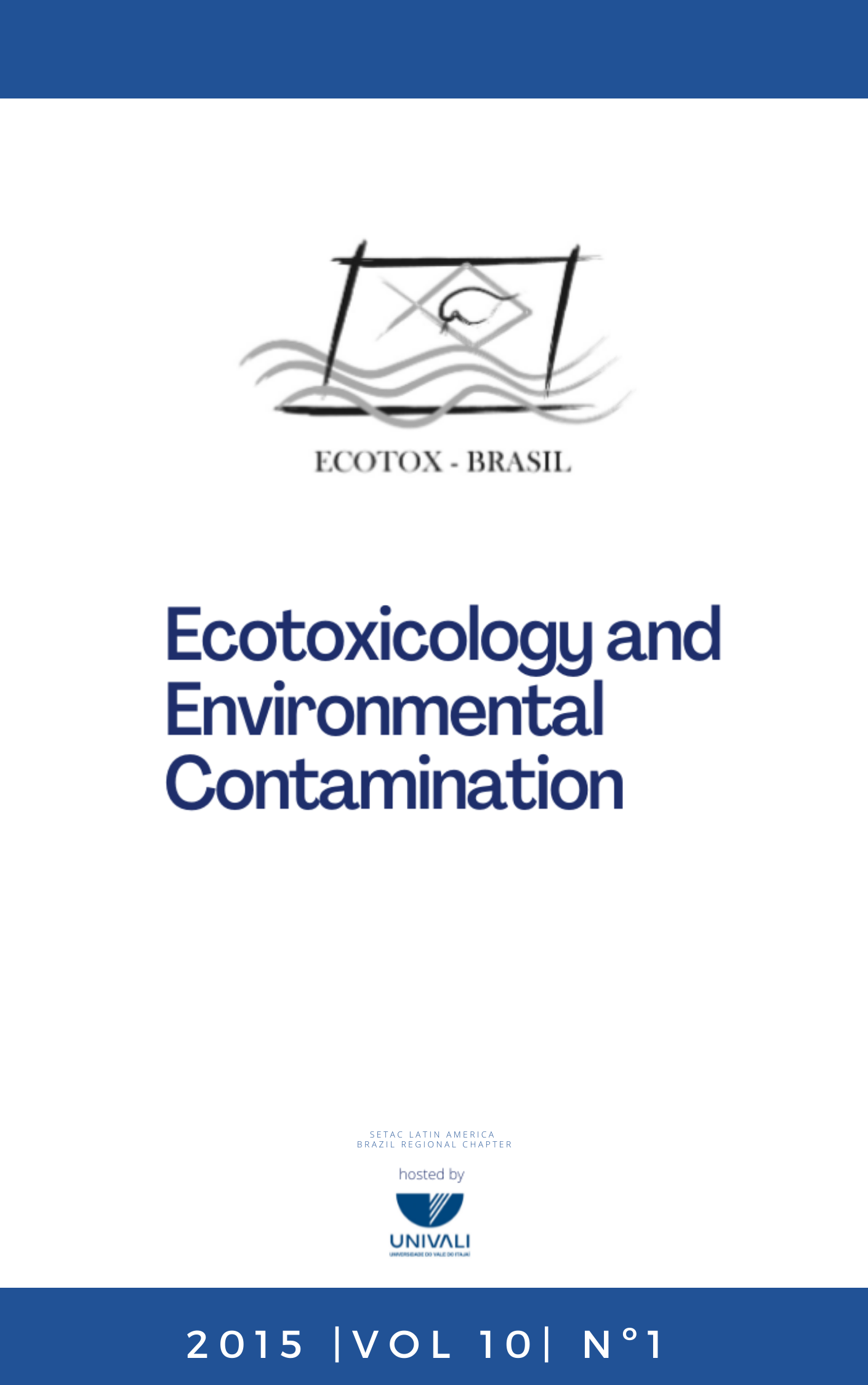Toxicity identification and evaluation of a refinery wastewater from Brazil (Phase I)
DOI:
https://doi.org/10.5132/eec.2015.01.07Resumen
Petroleum refineries generate a large amount of effluents, which if released without appropriate treatment can cause chronic effects to organisms. Most studies show that many contaminants can be responsible for the toxicity, among them ammonia, sulfide, cyanide, phenol and hydrocarbons. The present study evaluated the cause of the chronic toxicity of a refinery wastewater from Brazil using the organism Ceriodaphnia dubia in short-term test. The results suggest that metals such as barium, manganese and strontium can be contributing for the toxicity of the wastewater. Besides this, conductivity could be contributing to the toxicity too, since the level is high for the test organism evaluated.
Â
Descargas
Descargas
Publicado
Cómo citar
Número
Sección
Licencia
Copyright © 2006 ECOTOX-Brasil
Copyright notice: It is a condition for publication that manuscripts submitted to this journal have not yet been published and will not be simultaneously submitted or published elsewhere. By submitting a manuscript, the authors agree that copyright for their article is transferred to the Sociedade Brasileira de Ecotoxicologia (ECOTOX-Brasil) if and when the article is accepted for publication. The copyright covers the exclusive rights to reproduce and distribute articles, including reprints, photographic reproductions or any other reproduction of a similar nature, including translations. No part of this publication may be reproduced, stored in a retrieval system or transmitted in any form or by any means, electronic, mechanical, photocopying, recording or otherwise, without permission of the publisher.
Notice: While every effort is made by the EEC, editors and editorial board to see that no inaccurate or misleading data, opinions or statements appear in this journal, they wish to make it clear that the contents of the articles and advertisements published herein are the sole responsibility of the contributors or advertisers concerned. Accordingly, the EEC, the editorial board and editors and their respective employees, officers and agents accept no responsibility or liability whatsoever for the consequences of any inaccurate or misleading data, opinion or statement.




